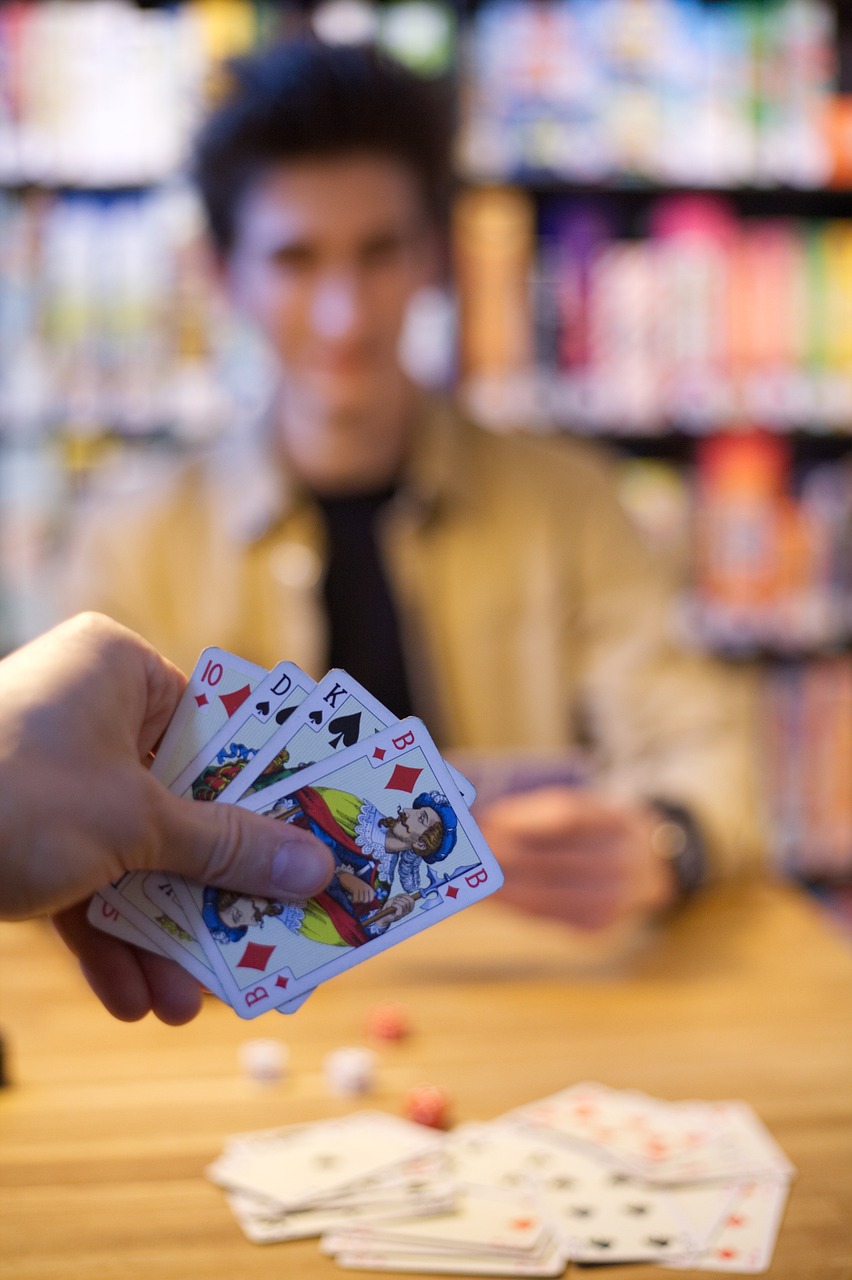Bluffing is a crucial aspect of poker gameplay that involves deceiving opponents into believing that one’s hand is stronger or weaker than it actually is. The psychological aspects of bluffing in poker are complex and multifaceted, involving factors such as body language, facial expressions, and verbal cues. Understanding these psychological aspects is essential for successful bluffing and can give players a significant advantage at the poker table. In this article, we will explore the psychological aspects of bluffing in poker and how they can be used to gain an edge in the game.
The Psychology Behind Successful Bluffing in Poker
One of the most important skills in poker is the ability to bluff successfully. Bluffing is the act of making a bet or raise with a weak hand in order to deceive your opponents into thinking you have a strong hand. Successful bluffing requires a deep understanding of the psychology of your opponents and the ability to control your own emotions.
The first step in successful bluffing is to understand your opponents. You need to be able to read their body language, facial expressions, and betting patterns to determine whether they have a strong hand or a weak hand. This requires a great deal of observation and analysis. You need to pay attention to every detail of your opponents’ behavior, from the way they hold their cards to the way they breathe.
Once you have a good understanding of your opponents, you need to be able to control your own emotions. Bluffing can be a very stressful and emotional experience. You need to be able to remain calm and focused, even when you are bluffing with a weak hand. This requires a great deal of mental discipline and self-control.
One of the keys to successful bluffing is to be unpredictable. You need to mix up your betting patterns and play different hands in different ways. This will make it more difficult for your opponents to read your behavior and determine whether you are bluffing or not.
Another important aspect of successful bluffing is timing. You need to choose the right moment to make your move. This requires a great deal of patience and observation. You need to wait for the right opportunity to present itself and then strike quickly and decisively.
Finally, successful bluffing requires a great deal of confidence. You need to be able to project an air of confidence and authority, even when you are bluffing with a weak hand. This requires a great deal of self-assurance and belief in your own abilities.
In conclusion, successful bluffing in poker requires a deep understanding of the psychology of your opponents and the ability to control your own emotions. You need to be able to read your opponents’ behavior, remain calm and focused, be unpredictable, choose the right moment to make your move, and project an air of confidence and authority. Bluffing is a skill that can be learned and developed over time, but it requires a great deal of practice and dedication. If you can master the art of bluffing, you can become a formidable opponent at the poker table.
The Importance of Reading Body Language in Bluffing
Body language is a key component of human communication, and it plays a significant role in poker. When playing poker, players use their body language to convey information about their hand, their emotions, and their intentions. Skilled players are able to read their opponents’ body language and use this information to make informed decisions about their own play.
One of the most important aspects of reading body language in poker is identifying tells. Tells are subtle physical cues that reveal information about a player’s hand or their emotions. For example, a player who is nervous or anxious may fidget with their chips or avoid eye contact. A player who is confident may sit up straight and make direct eye contact with their opponents. By identifying these tells, players can gain valuable information about their opponents’ hands and use this information to make better decisions.
However, it is important to note that not all tells are reliable. Some players may intentionally give false tells in order to deceive their opponents. Additionally, some players may be aware of their own tells and work to conceal them. Therefore, it is important to use caution when relying on tells and to consider other factors, such as the player’s betting patterns and the overall context of the game.
Another important aspect of reading body language in poker is understanding the impact of your own body language. When playing poker, it is important to be aware of your own body language and to avoid giving away information about your hand or your emotions. For example, a player who is bluffing may try to appear confident and relaxed, even if they are feeling nervous or anxious. By controlling their own body language, players can avoid giving away information to their opponents and maintain a strategic advantage.
In addition to reading body language, there are other psychological factors that come into play when bluffing in poker. One of the most important of these factors is the concept of “table image.” Table image refers to the way that other players perceive you at the table. If you have a reputation for being a tight player who only plays strong hands, other players may be more likely to fold when you make a big bet. On the other hand, if you have a reputation for being a loose player who bluffs frequently, other players may be more likely to call your bets.
Therefore, it is important to be aware of your own table image and to use it to your advantage. If you have a tight table image, you may be able to bluff more effectively by making big bets when you have a weak hand. If you have a loose table image, you may be able to win more pots by playing strong hands aggressively.
In conclusion, bluffing is a crucial part of poker, and it requires a deep understanding of human psychology. Reading body language is a key component of bluffing, and skilled players are able to use their opponents’ body language to gain valuable information about their hands and their emotions. Additionally, players must be aware of their own body language and table image in order to avoid giving away information to their opponents. By mastering the psychological aspects of bluffing, players can gain a strategic advantage and increase their chances of winning at the poker table.
The Role of Emotions in Bluffing: How to Keep a Straight Face
Emotions play a significant role in bluffing. When a player is bluffing, they are essentially lying to the other players at the table. This can be a stressful and anxiety-inducing experience. The fear of being caught in a lie can cause a player to become nervous, fidgety, or even sweat. These physical manifestations of anxiety can give away a player’s bluff and cause them to lose the hand.
To be successful at bluffing, a player must learn to control their emotions. This means keeping a straight face and not giving away any physical cues that may indicate a bluff. One way to do this is to practice mindfulness techniques. Mindfulness is the practice of being present in the moment and aware of your thoughts and emotions. By practicing mindfulness, a player can learn to recognize when they are feeling anxious or nervous and take steps to calm themselves down.
Another way to control emotions while bluffing is to use breathing techniques. Deep breathing can help to slow down the heart rate and reduce feelings of anxiety. A player can take a deep breath before making a bluff to help them stay calm and focused.
In addition to controlling emotions, a player must also be aware of the emotions of the other players at the table. Bluffing is a game of deception, and a player must be able to read the emotions of their opponents to determine if they are likely to call the bluff. This requires a great deal of skill and experience.
One way to read the emotions of other players is to pay attention to their body language. A player who is confident in their hand may sit up straight and make eye contact with other players. A player who is unsure of their hand may fidget or avoid eye contact. By paying attention to these cues, a player can get a sense of whether or not their bluff is likely to be successful.
In conclusion, bluffing is a crucial skill in poker that requires a great deal of psychological control. Emotions play a significant role in bluffing, and a player must learn to control their emotions to be successful. Mindfulness and breathing techniques can help a player stay calm and focused while bluffing. Additionally, a player must be able to read the emotions of other players to determine if their bluff is likely to be successful. By mastering the psychological aspects of bluffing, a player can become a successful poker player and win big at the table.
The Impact of Experience on Bluffing Strategies in Poker
Bluffing is a complex psychological game that requires a deep understanding of human behavior. Experienced players know that bluffing is not just about the cards you hold, but also about the way you present yourself at the table. A skilled bluffer can use body language, facial expressions, and verbal cues to deceive their opponents and make them believe that they have a stronger hand than they actually do.
Experience plays a crucial role in bluffing strategies. Experienced players have a better understanding of their opponents’ behavior and can use this knowledge to their advantage. They know when to bluff and when to fold, and they can read their opponents’ reactions to their bluffs. This allows them to adjust their strategies accordingly and make more informed decisions.
One of the key benefits of experience in bluffing is the ability to recognize patterns in your opponents’ behavior. Experienced players can identify when their opponents are bluffing or when they have a strong hand. This allows them to adjust their own strategies and make more informed decisions. For example, if an experienced player notices that their opponent always bets big when they have a strong hand, they can use this information to their advantage by bluffing when their opponent bets big.
Another benefit of experience in bluffing is the ability to control your emotions. Bluffing can be a stressful and emotional experience, especially if you are new to the game. Experienced players have learned to control their emotions and remain calm under pressure. This allows them to bluff more effectively and make better decisions at the table.
However, experience alone is not enough to be a successful bluffer. It is also important to have a solid understanding of the game and to be able to read your opponents accurately. This requires a combination of skill, strategy, and psychology. Skilled players know when to bluff and when to fold, and they can read their opponents’ reactions to their bluffs. They also know how to use body language, facial expressions, and verbal cues to deceive their opponents and make them believe that they have a stronger hand than they actually do.
In conclusion, bluffing is a crucial part of poker, and it requires a deep understanding of human behavior and psychology. Experience plays a crucial role in bluffing strategies, as experienced players have a better understanding of their opponents’ behavior and can use this knowledge to their advantage. However, experience alone is not enough to be a successful bluffer. It is also important to have a solid understanding of the game and to be able to read your opponents accurately. Skilled players know when to bluff and when to fold, and they can use a combination of skill, strategy, and psychology to deceive their opponents and win at the table.
The Connection Between Bluffing and Risk-Taking Behavior in Poker
Bluffing is a form of deception, and it requires a certain level of confidence and courage. When a player decides to bluff, they are essentially taking a risk. They are betting that their opponents will believe their bluff and fold their hands, even though they may have a better hand. This is where the connection between bluffing and risk-taking behavior comes in.
Studies have shown that there is a correlation between risk-taking behavior and the ability to bluff effectively in poker. People who are more willing to take risks in their everyday lives are more likely to be successful at bluffing in poker. This is because they are more comfortable with the idea of taking a chance and potentially losing, which is a necessary part of bluffing.
However, it is important to note that there is a difference between taking calculated risks and being reckless. Successful poker players are not reckless gamblers who bet on every hand and hope for the best. They are strategic thinkers who carefully consider their options and make calculated decisions based on the information available to them.
Bluffing is also connected to the concept of self-control. In order to bluff effectively, a player must be able to control their emotions and not give away any signs that they are bluffing. This requires a great deal of self-control and discipline. Players who are easily rattled or prone to emotional outbursts are less likely to be successful at bluffing.
Another psychological aspect of bluffing in poker is the concept of perception. A player’s ability to bluff effectively is often based on how they are perceived by their opponents. If a player is seen as a tight, conservative player who only bets when they have a strong hand, their opponents are more likely to believe that they have a good hand when they do decide to bet. On the other hand, if a player is seen as a loose, aggressive player who bets on every hand, their opponents may be more likely to call their bluff.
In conclusion, bluffing is a crucial part of poker, and it is closely connected to risk-taking behavior, self-control, and perception. Successful poker players are those who are able to take calculated risks, control their emotions, and manipulate their opponents’ perceptions. While bluffing can be a risky move, it can also be a very effective one when done correctly. As with any form of gambling, it is important to remember to gamble responsibly and never bet more than you can afford to lose. Bluffing in poker is a complex psychological phenomenon that involves a range of cognitive and emotional factors. Successful bluffing requires a deep understanding of human behavior, the ability to read and manipulate opponents, and a willingness to take calculated risks. While bluffing can be a powerful tool in the game of poker, it is important to remember that it is not a foolproof strategy and should be used judiciously. Ultimately, the psychological aspects of bluffing in poker highlight the intricate interplay between cognition, emotion, and behavior in high-stakes decision-making contexts.




